Late 17th-century
Flemish master
Oil on canvas
18th-century gilded frame
Canvas, 75 x 57 cm, frame, 85 x 67 cm
Cleaned and relined
The painting depicts one of the rarest and most impressive sacred subjects in ancient painting and refers to the story of Erasmus, Bishop of Formia, as he was martyred during the Diocletianic persecutions of 303 AD. The harrowing scene was rendered by the artist with remarkable force in a dramatic composition with vibrant colors. Nicolas Poussin's famous work, dated 1628 and exhibited in the Vatican Pinacoteca, contributed to spreading awareness of this brutal episode. Poussin's interpretation of the cruel martyrdom, with the Saint's extreme torture being disemboweled by a winch, attracted the interest of contemporary artists, some of whom reproduced the scene. In this case, the artist depicts the martyrdom in the manner typical of Flemish painting, preferring a setting inside a prison rather than outdoors, in keeping with the unmistakable characteristics of Nordic art. The work presents a meticulous reading of every detail, from the instruments of torture to the colorful clothing and headdresses of the torturers. The Emperor Diocletian, wearing a crimson cloak, complacently observes the terrible punishment he himself inflicted on the Saint, lying naked on a wooden board with his belly slit open by a sword; his entrails are rolled up onto the winch operated by one of the executioners. The use of light and vibrant color on the figures is excellent, accentuated by the gloomy darkness of the cell, illuminated only by a small grated window. On the floor are the bishop's robes and miter, along with his Holy Scriptures with torn pages. The canvas is painted with precision and excellent descriptive skill, highlighted by its excellent condition.


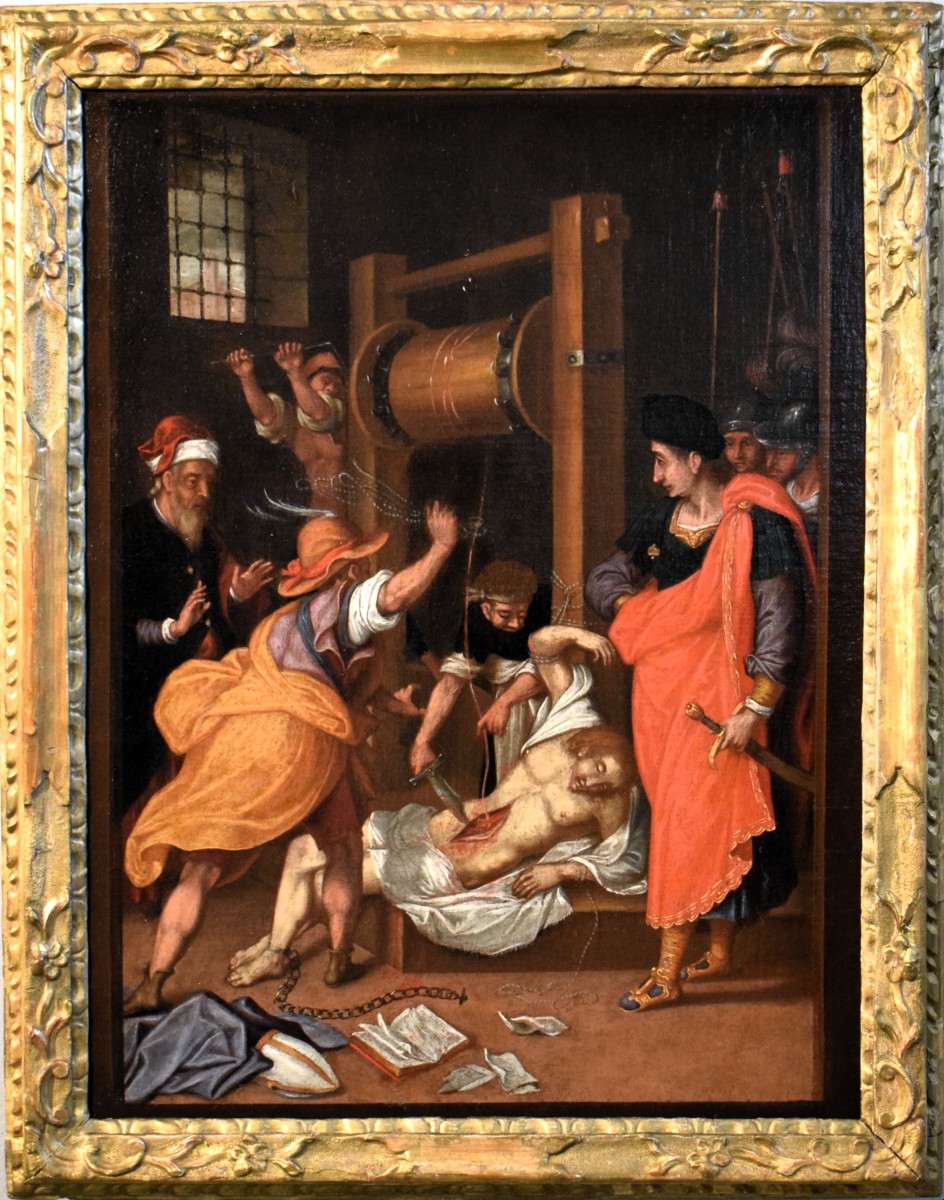
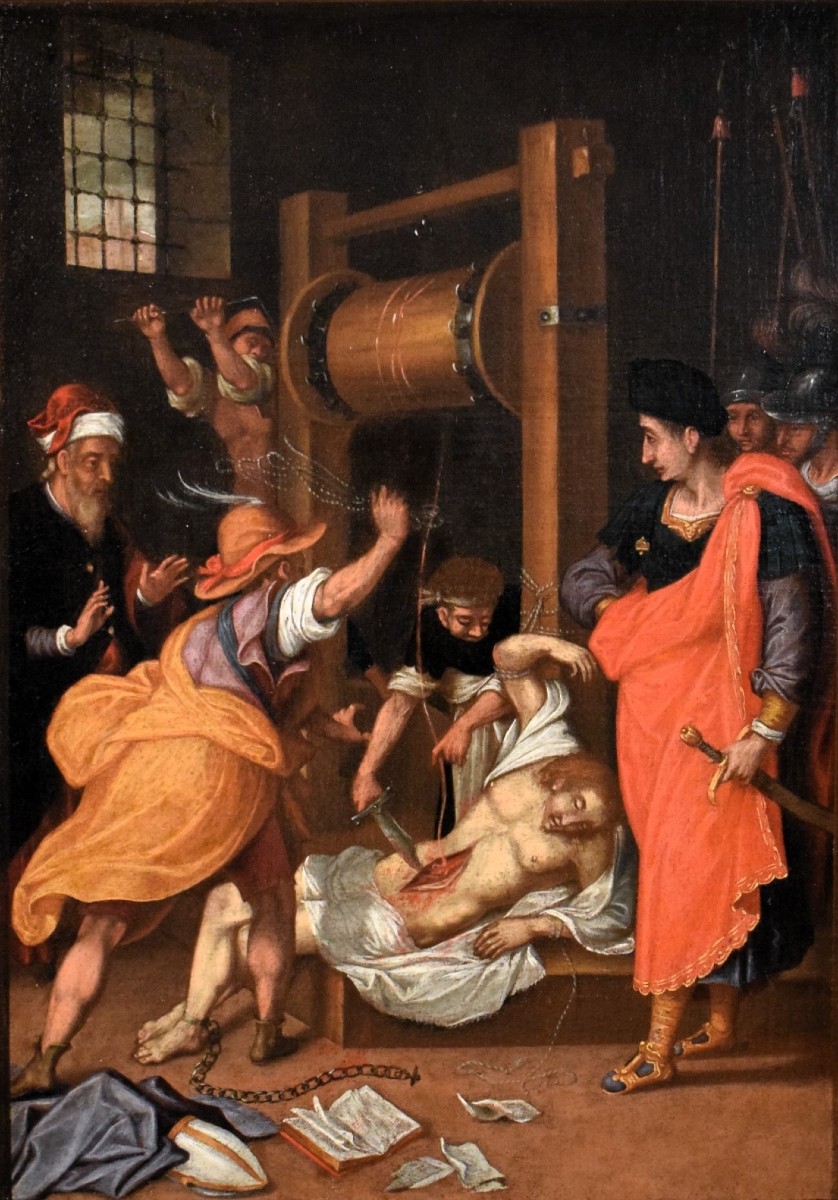
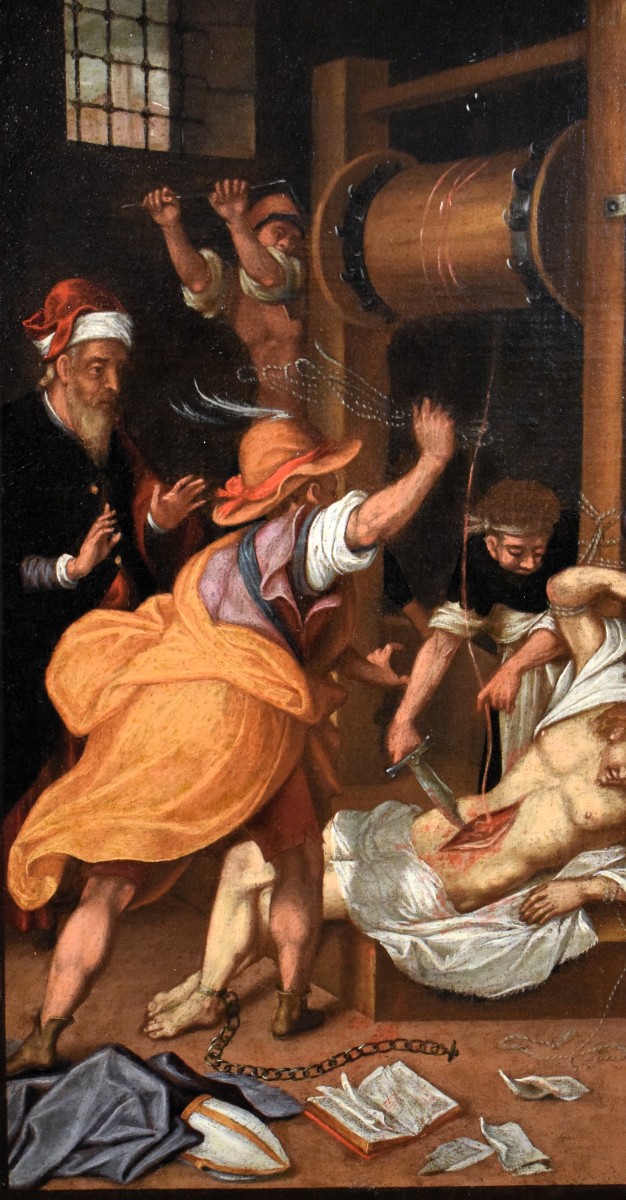
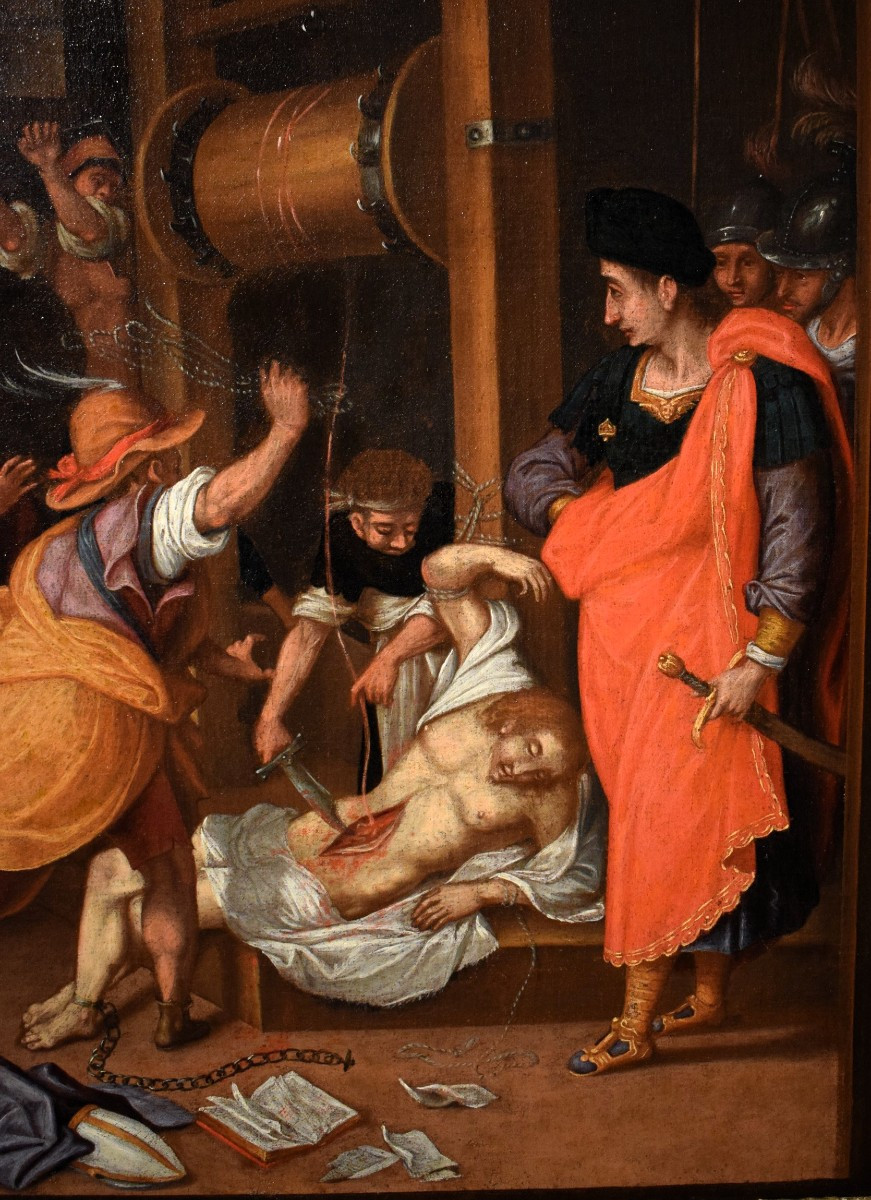
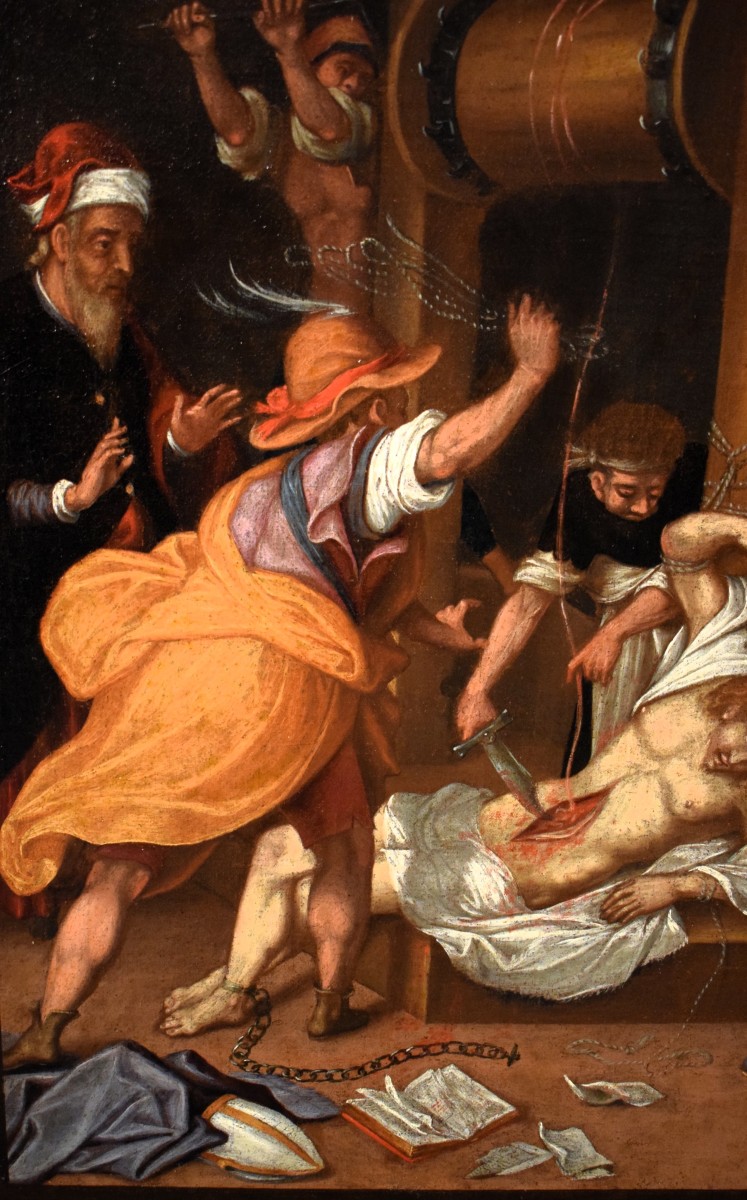
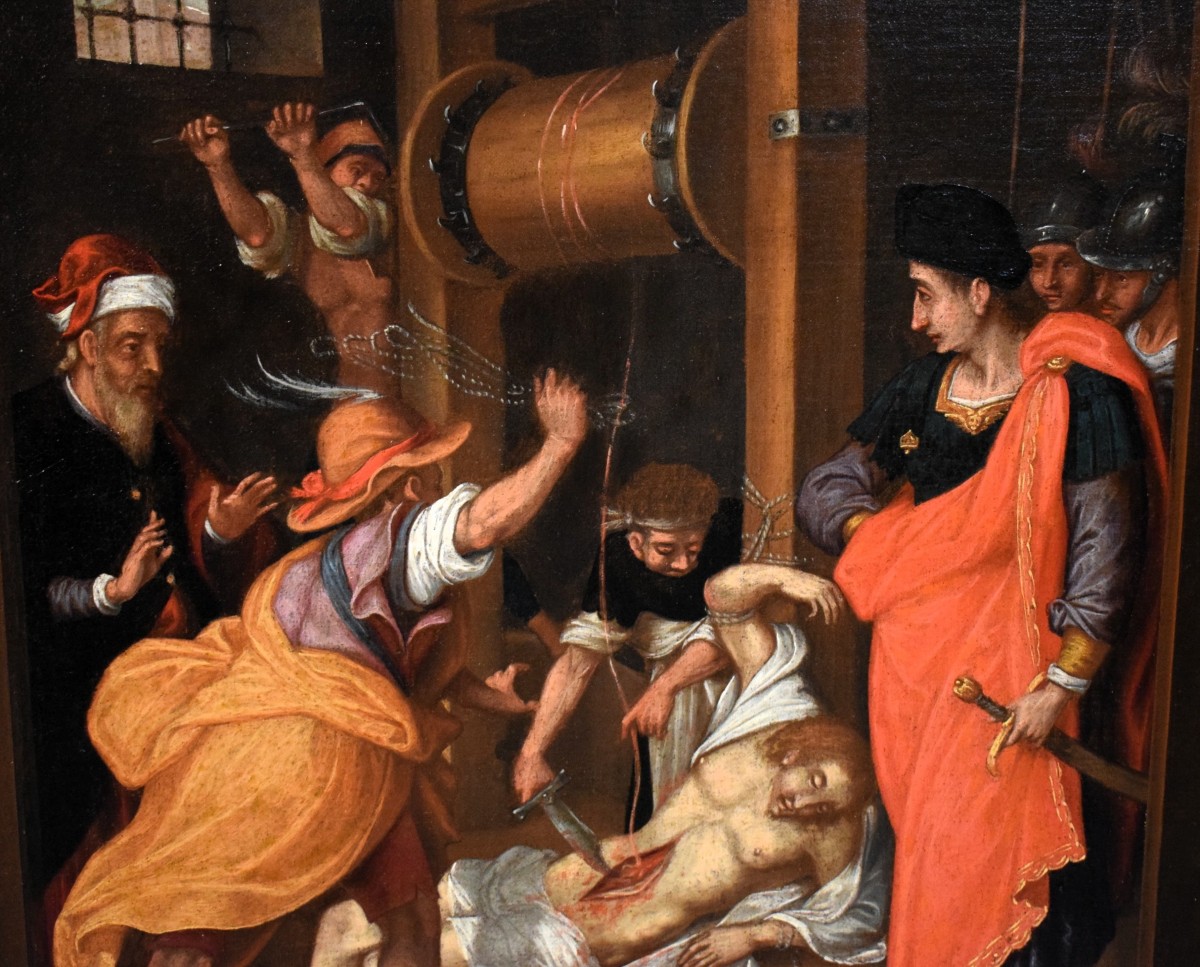
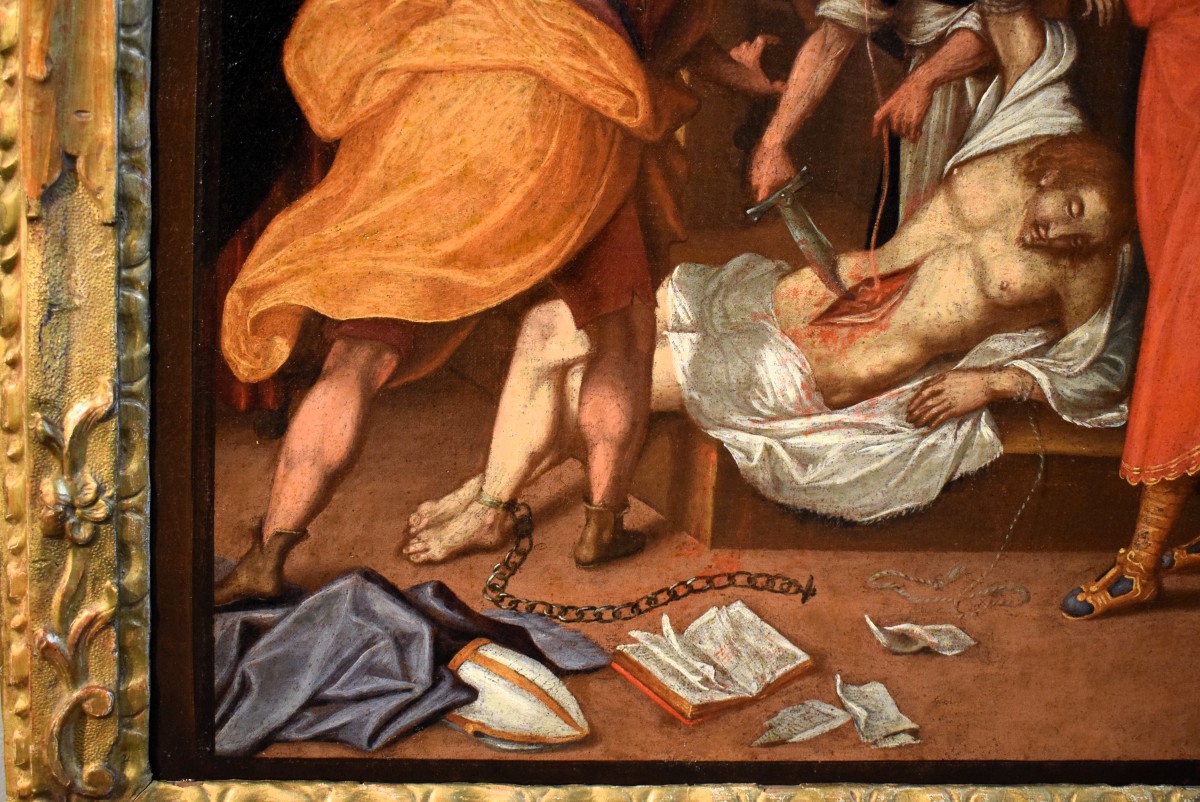
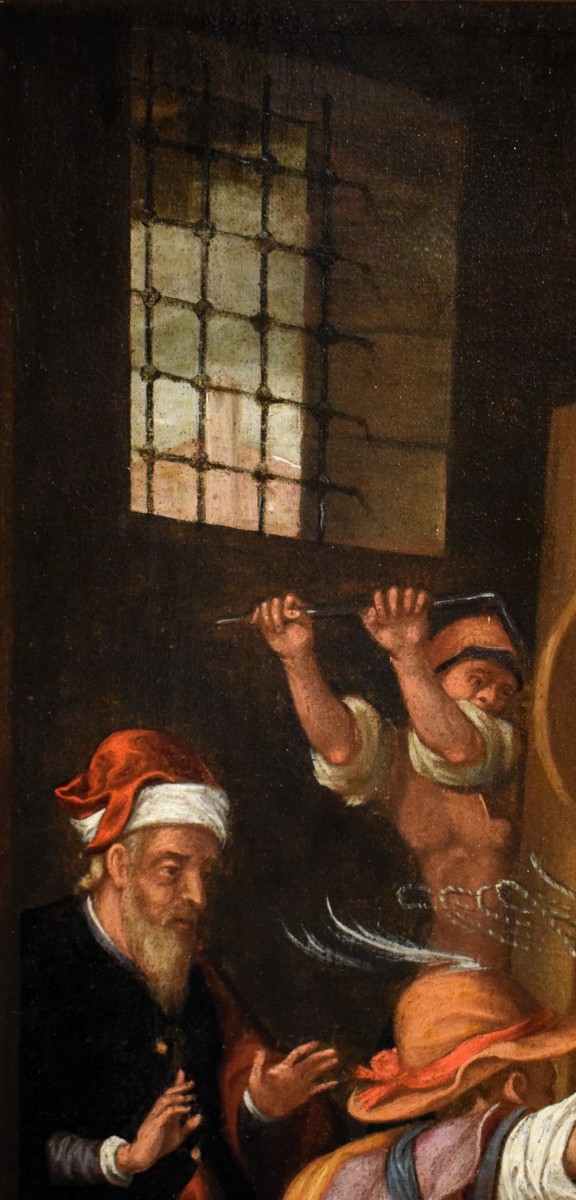
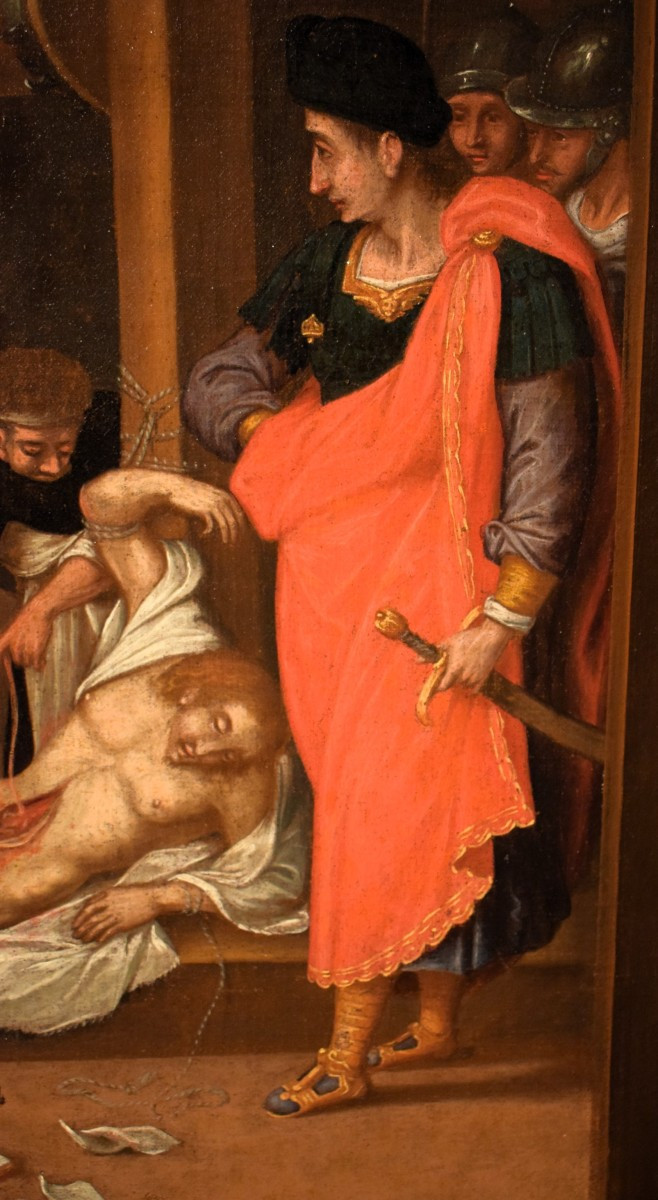
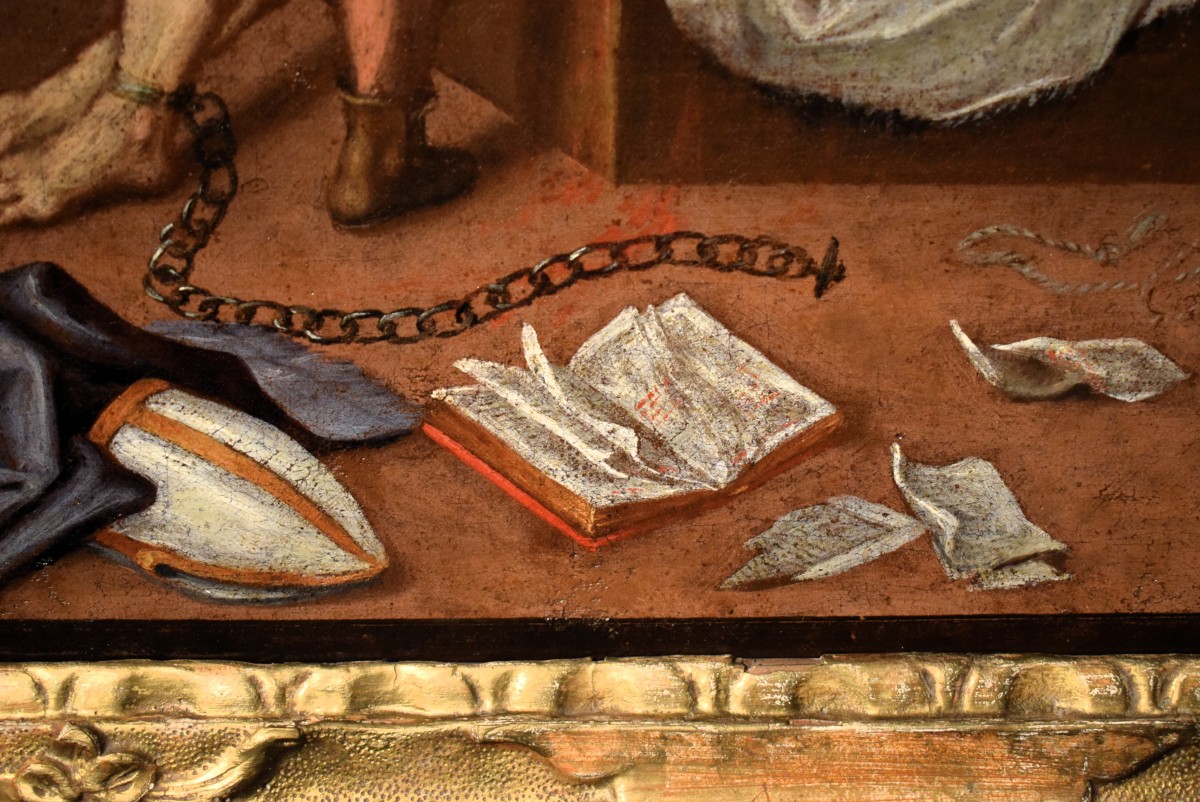

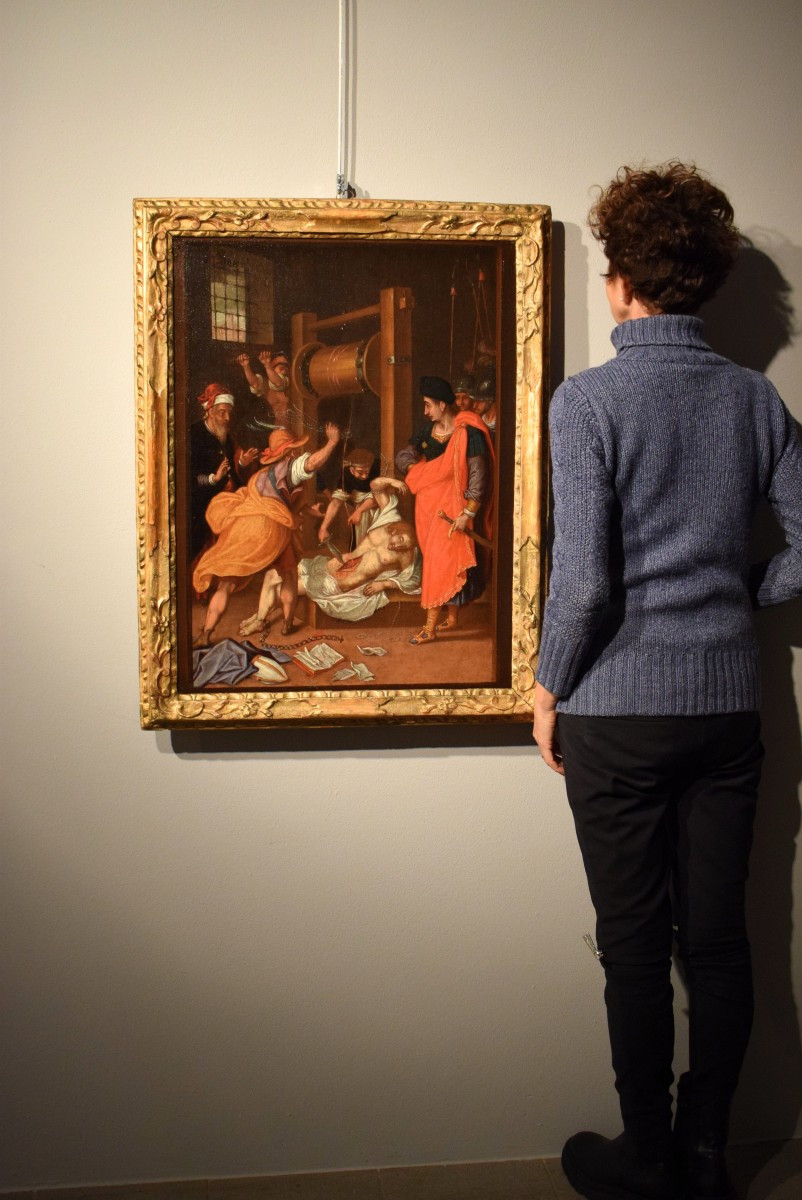

















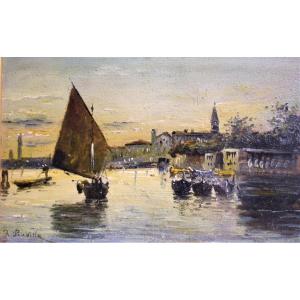
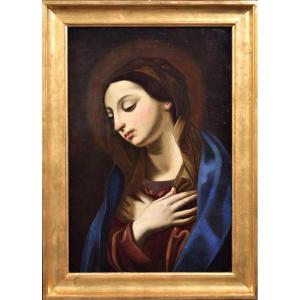






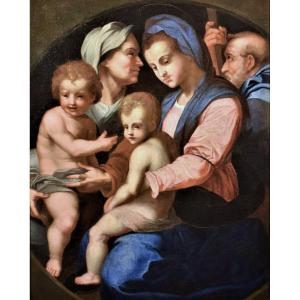
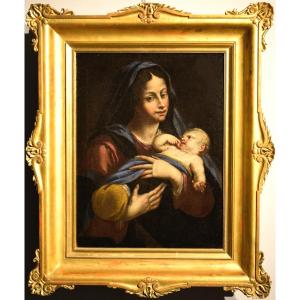

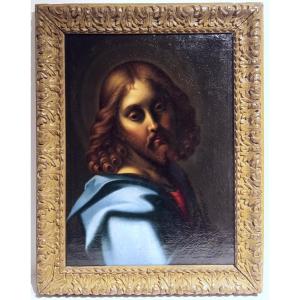







 Le Magazine de PROANTIC
Le Magazine de PROANTIC TRÉSORS Magazine
TRÉSORS Magazine Rivista Artiquariato
Rivista Artiquariato